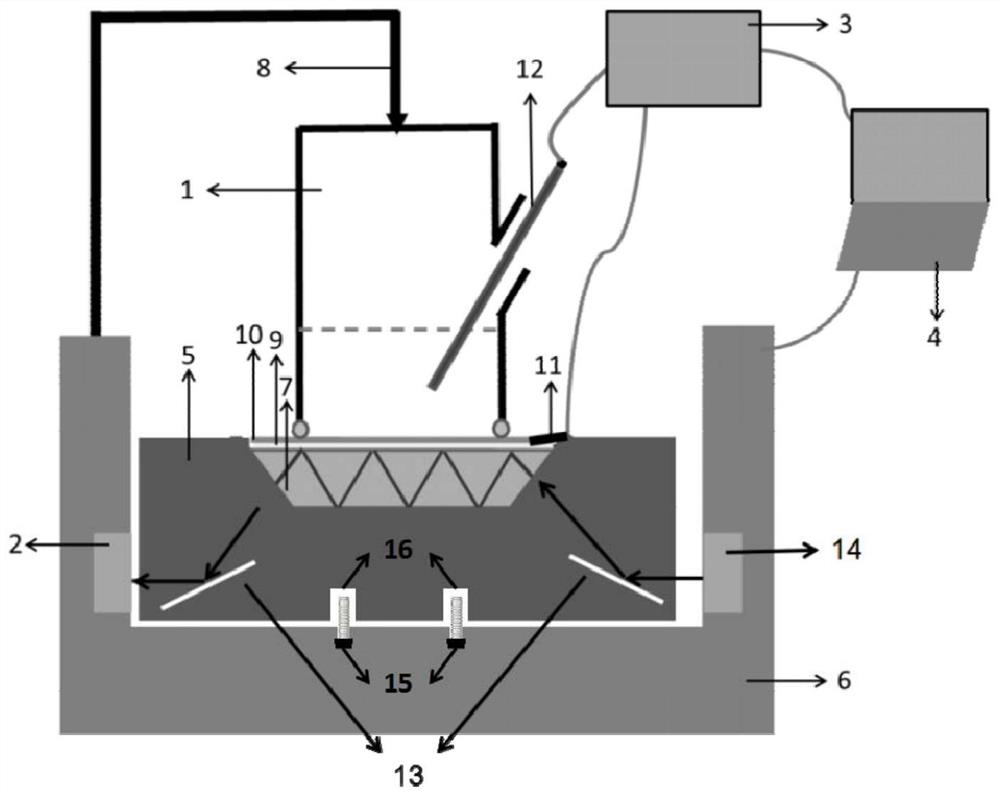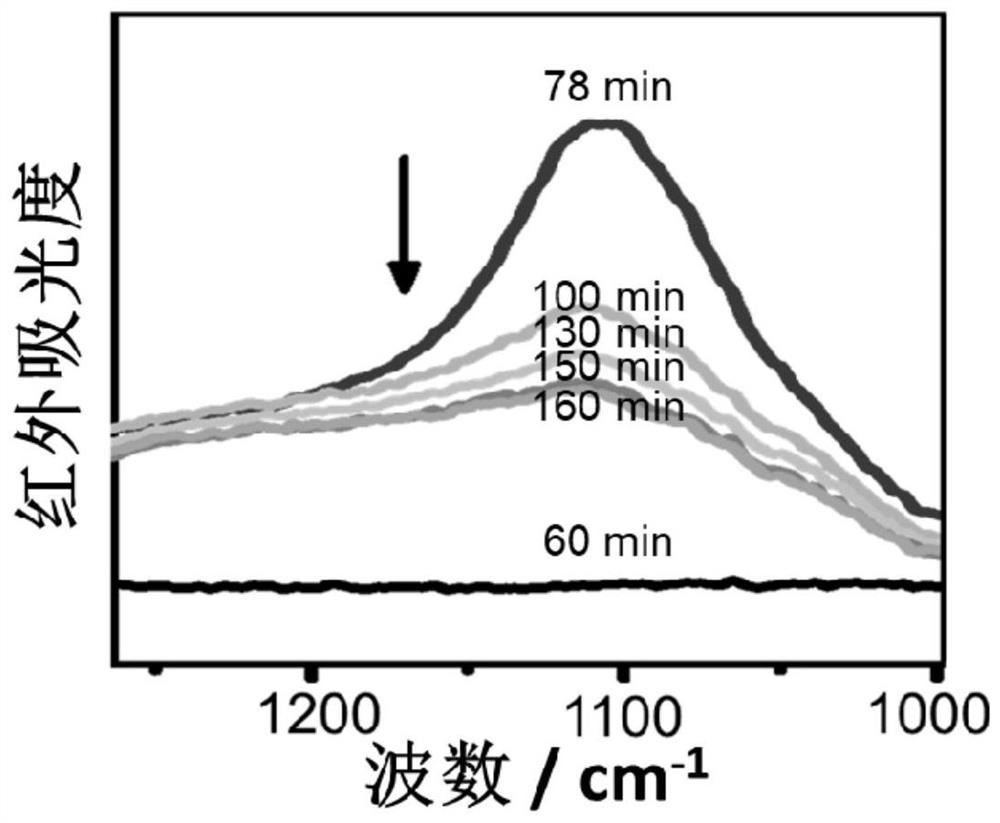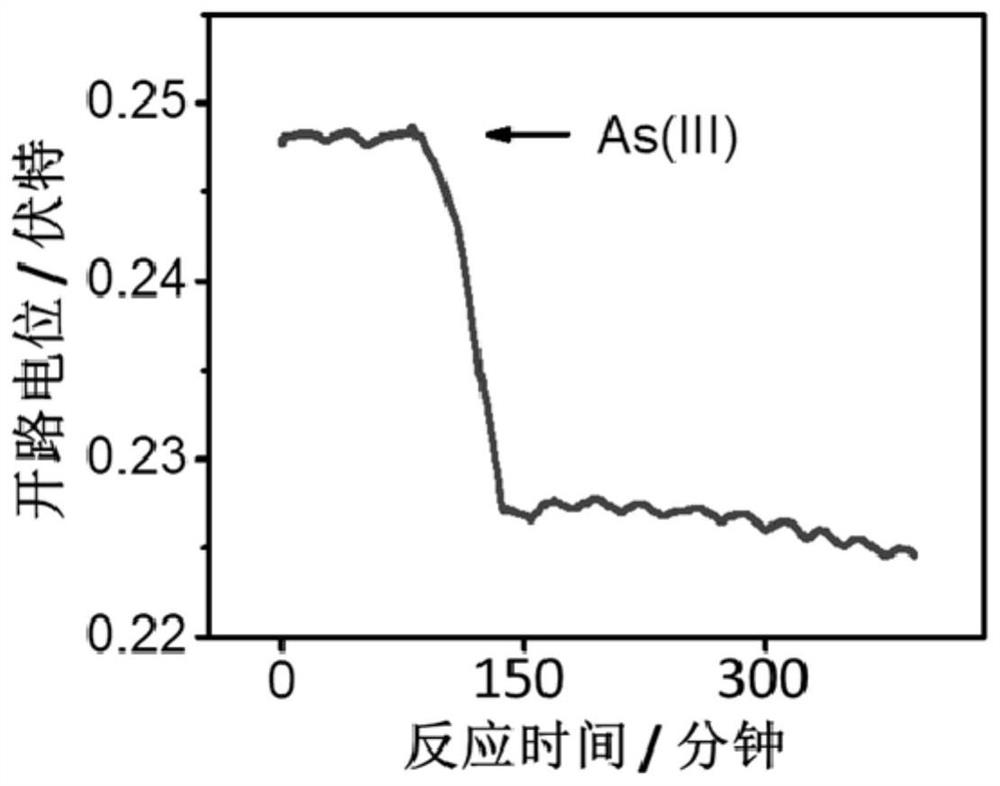Pollutant interface reaction electrochemical infrared spectrum combined in-situ characterization method and pollutant interface reaction electrochemical infrared spectrum combined in-situ characterization device
A technology of infrared spectroscopy and interface reaction, applied in the field of environmental chemistry, to achieve a wide range of applications and solve pollution problems
- Summary
- Abstract
- Description
- Claims
- Application Information
AI Technical Summary
Problems solved by technology
Method used
Image
Examples
Embodiment 1
[0052] Example 1: Electrochemical Infrared Spectroscopy Combined Method Research Infrared wavenumber greater than 1000cm -1 Pollutant Response
[0053] according to figure 1 To build an electrochemical infrared spectroscopy device, the reaction detection window is diamond, and the conductive
[0054] A device for in-situ characterization of pollutant interface reactions coupled with electrochemical infrared spectroscopy, such as figure 1 As shown: it includes an optical path reflection part, the optical path reflection part includes a housing, and the two sides of the optical path reflection part inside the housing Minute Do not install an optical reflection plate to ensure that the infrared incident light can reach the surface of the detection window, and there are openings on both sides of the housing, which is conducive to the incident of the light source on the detection window. An infrared spectrum detector 2 and a light source 14 are respectively arranged on both sid...
Embodiment 2
[0064] Example 2: Electrochemical Infrared Spectroscopy Method Research Infrared wavenumber is less than 1000cm -1 Pollutant Response
[0065] Based on the influence of some detection windows, the electrochemical infrared spectrometer is at 1000cm -1 The following will be greatly disturbed, so this wave number is the limit, this part studies the 1000cm -1 The following pollutants react. Wastewater discharged from leather factories, printing and dyeing factories and other factories often contains heavy metal chromium, which may cause renal failure or even cancer, and the infrared wave number of chromate is less than 1000cm -1 . Therefore, this part studies the related reactions of chromate pollutants. With hematite (HNC) as the solid-phase reactant, the infrared wavenumber is less than 1000cm -1 The chromate (Cr) and wave number greater than 1000cm -1 The oxalate (OX) reaction in order to explore the applicability of this method to reactants with different wavenumbers. S...
PUM
 Login to View More
Login to View More Abstract
Description
Claims
Application Information
 Login to View More
Login to View More - R&D
- Intellectual Property
- Life Sciences
- Materials
- Tech Scout
- Unparalleled Data Quality
- Higher Quality Content
- 60% Fewer Hallucinations
Browse by: Latest US Patents, China's latest patents, Technical Efficacy Thesaurus, Application Domain, Technology Topic, Popular Technical Reports.
© 2025 PatSnap. All rights reserved.Legal|Privacy policy|Modern Slavery Act Transparency Statement|Sitemap|About US| Contact US: help@patsnap.com



